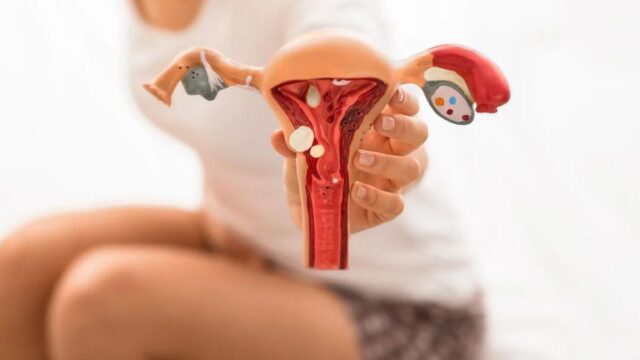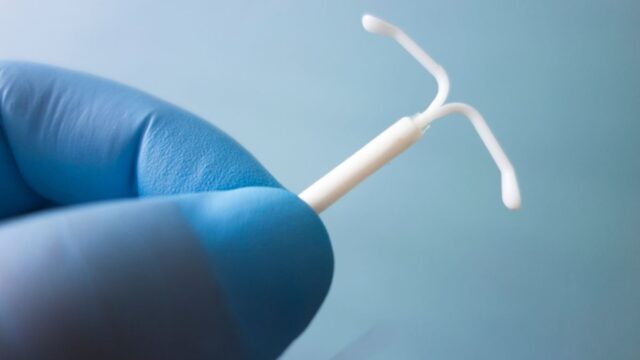In the days leading to your period, you may feel a small twinge in your back or the beginning of an ache in your stomach. It’s your body saying hey, gear up, menstrual cramps are coming your way.
Period cramps are annoying, frustrating, and altogether too frequent and common to do anything except grit your teeth and bear it. But sometimes it’s more than just your average cramp or pelvic pain. Sometimes, the pain is debilitating and difficult to bear.
Let’s talk about why period pain happens, what is a normal amount of pain and when you should be concerned about it.
Why do I have period pain?
Generally, the pain is caused by menstrual cramps or dysmenorrhea. While other parts of your body such as your lower back or your breasts may also get affected before and after your cycle, menstrual cramps are located in the lower abdomen.
Before your period, the pain is caused by uterine contractions getting ready for your menstrual cycle. During your period, these contractions help your uterus help shed its line. They are triggered by something called ‘prostaglandins’ which is a hormone-like substance. Some studies have shown that a higher level of prostaglandin is associated with severe menstrual cramps.
During your period, your uterus contracts to help shed its lining. These contractions are triggered by hormone-like substances called prostaglandins. Higher levels of prostaglandins are associated with more severe menstrual cramps.
Symptoms of normal menstrual cramps:
- Cramps and throbbing pain in the lower abdomen
- Continuous ache, which may also affect your lower back and thighs
- Nausea
- Dizziness
- Headaches
- Loose stools
Women may face only some of these symptoms, and their severity may vary.
How much pain is too much?
Usually, menstrual cramps range from moderate to severe. They begin one or two days before your period, continue through the cycle and end after your cycle has peaked.
You understand your body best, so we urge you to take stock of how you feel and deal with it accordingly. Normal menstrual cramps are painful, but are easily relieved with over-the-counter pain relief medication.
Some other ways to ease menstrual cramps are –
- Anti-inflammatory medication
- Regular exercise
- Heat packs or hot water bottles where the pain is the most severe
- Some contraceptives like the pill and the IUD also have shown signs of reducing pain during the menstrual cycle.
Read: 5 Yoga Poses For Period Pain Relief
Severe Period Pain
If you have severe cramps that begin early in your menstrual cycle and last longer than typical cramps, with debilitating pain that hinders your daily activity, there might be an underlying medical condition. If you face any of the issues listed below combined with severe period pain, we urge you to speak to a medical practitioner as soon as you can.
1. Endometriosis

Endometriosis is a chronic condition where tissue similar to the uterus lining grows outside the uterus. Some of its symptoms are:
- Pelvic pain
- Heavy periods, often lasting longer than seven days
- Gastrointestinal pain
- Painful bowel movements
2. Polycystic Ovary Syndrome (PCOS)
A fairly common disorder, where irregular periods is a major symptom, PCOS can be the cause of your painful periods. Some symptoms are:
- Heavy bleeding
- Weight gain and trouble losing weight
- Acne
- Hair loss
3. Fibroids
Fibroids are growths that develop either inside or outside of the uterus. They are non-cancerous and vary in size and number. Whatever symptoms a person may face due to fibroids, depends on the size, number and location of the fibroids in and around the uterus. Some symptoms are:
- Lower back pain
- Constipation
- Long, heavy periods
4. Cervical Stenosis
Also known as a closed cervix, cervical stenosis happens when the opening of your cervix is narrow or completely closed. It is an issue that can be born with, or develop later in life.
Due to the fact that a closed cervix can prevent menstrual blood from leaving your body, it can lead to your periods being light or irregular, along with severe menstrual cramps.
5. Adenomyosis
Adenomyosis occurs when endometrial tissue that lines your uterus grows into the uterine wall, which in turn causes the uterus to grow two to three times its normal size.
While it may not always cause symptoms, you may feel your menstrual cramps get worse and prolonged bleeding during your period.
6. Pelvic Inflammatory Disease (PID)
A bacterial infection, PID is generally caused by sexually transmitted diseases like chlamydia and gonorrhoea. Some of its symptoms include:
- Pelvic pain
- Bleeding during or after sex
- Foul smelling vaginal discharge
7. Intrauterine Device (IUD)

While an IUD is one of the safest forms of birth control, its insertion into your uterus may cause some side effects along with severe menstrual cramps, such as irregular periods and heavy bleeding.
There is also a small risk of the IUD moving out of place or perforating your uterus during insertion. In both these instances, there will be severe pelvic pain.
On occasion, severe menstrual cramps and pain can also be the sign of an infection. The symptoms of an infection are –
- Severe pelvic pain
- Fever
- Foul-smelling vaginal discharge
Your periods should not be causing you immense pain, to the point of dysfunction. It is not normal, and nor should you live with it. If your menstrual cycle is causing severe pain, please visit a gynaecologist at the earliest.
Remember, some might dismiss your pain as a regular bodily phenomenon, but make sure your medical practitioner takes you seriously and look after yourself!
Open up like never before and participate in conversations about beauty, entrepreneurship, mental health, menstrual & sexual health, and more. Desi women, join our community NOW!

